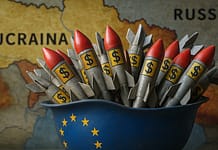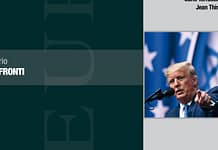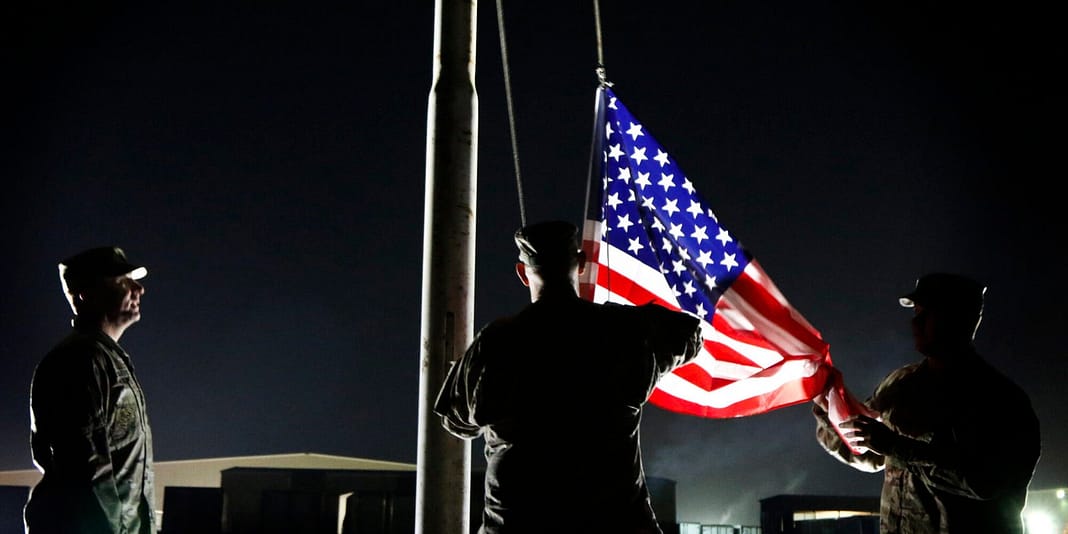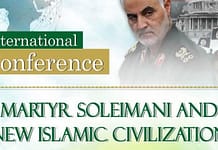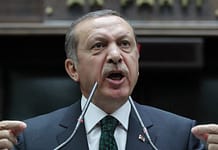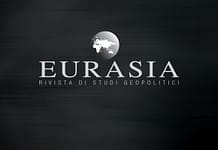INTERNATIONAL CONFERENCE ON
The Decline of the United States
Past Trends and Future Changes
(Teheran, October 27th, 2020)
Intervention of Daniele Perra (“Eurasia. Rivista di studi geopolitici”)
Title: The Islamic-Confucian Axis. The Iran-China Strategic Partnership as a major propellant for the decline of the US hegemony in Eurasia
Two years after the end of the “Cold War”, the American political scientist Samuel P. Huntington published an article with the emblematic title The clash of civilizations. This article has been the prelude for his most famous book with the same title published three years after in 1996.
Far from accepting Fukuyama’s theories about the end of history, Huntington realized that the so-called unipolar moment (the age of US global hegemony) could not last forever, and that the collapse of the Soviet Union and its satellites would not have produced automatically a process of global democratization and westernization.
Huntington understood immediately that some civilizations (more than States) with strong and deep roots (those civilizations – using heideggerian terms – that, for example, are closest to their own origins and they perceive themselves as “centers” or geopolitical “poles”) would not have accepted a full assimilation with western modernity. So, in his work, the American thinker outlines, in a very generic way, nine different civilizations: Western, Orthodox, Islamic, Latin-American, African, Buddhist, Hindu, Japonic and Sinic (or Confucian).
Among these civilizations, Huntington has indicated the Islamic one and the Confucian one as the major threats to the “West”. In fact, these civilizations with their “core values of authority, order, hierarchy and the supremacy of the collective over the individual create obstacles to the process of democratization”[1].
Therefore, in Huntington’s view, Confucianism and Islam are far distant from the western culture and, using Karl Popper’s scheme, they represent the worst enemies of the so called “open society”.
However, what Huntington does not say is that what he calls “West”, in the reality, is not a geographical or cultural concept but an ideological one. The West, that in his thought includes North America and Europe, is not a civilization but an ideological construction that follows precise lines (liberal democracy, capitalism, secularism, civil rights rather than social rights and so on). This ideological construction has been imposed by force to Europe in the first half of the previous century and, to some extent, has annihilated the European being and the European power will. Some German thinkers, for example, exponents of the Konservative Revolution during the period between the two world wars, used to believe that the First World War was a sort of religion war: a crusade of the West against Germany to make it become West[2]. While the Italian poet Gabriele D’Annuzio, more or less in the same years, used to invite his followers to refuse the West “dominated by bankers”.
De facto, even ancient Greeks never defined themselves as westerners. In Plato’s dialogues the geographical space of the West begins after the Columns of Hercules: that is after Gibraltar, in the Atlantic Ocean. And the West itself was perceived as the space of darkness; an idea that reminds the thought of the Persian mystic philosopher Sohrawardi.
Nowadays, even if the West and its modern democracy claim to be heirs of the Greek πόλις, perceived as the original form of democracy, we have to consider that Ancient Greeks did not know at all the paradigm of human subjectivity. In fact, the Greek πόλις was based on the junction of Gods. And even many ancient Greek thinkers used to believe that democracy was a form of degeneration that would have inevitably conducted their society to decay (as actually happened).
So, the idea of the West has been imposed to Europe in order to guarantee an ideological superstructure to the Anglo-American domination of the Continent. Being Europe the most important part of this “empire”, breaking this ideological link (allowing the integration of the whole Eurasian Continent) means automatically the end of the US hegemony and the beginning of multipolarism. This is the reason why the ideas of Samuel P. Huntington had a huge influence on different American administrations, from George Bush Jr. to Obama and Trump.
Now it is time to come back to the Islamic-Confucian Axis. Steve Bannon, the main ideologist of what we can call “trumpism” and former Chief Strategist of the White House, for example, believes that the creation of this Axis represents the main threat for the maintenance of a global order based on the “American values”[3]. Why?
Bannon identifies Turkey, Iran and China as the main enemies of the West. The formation of a geopolitical link between these three countries (with the addition of Russia that he hopes to bring on the US side) means the construction of a deep cooperation in Eurasia that would reduce the American efforts to keep hegemony through destabilization (the Brzezinski’s method). So, we are witnessing the constant alternation between the efforts for building a frame of cooperation to improve trade relations and solve the regional issues peacefully and the American efforts to destroy a cooperation that would reduce the US capacity to control its hegemonic interests. The current conflict between Armenia and Azerbaijan, the assassination of General Soleimani during a diplomatic mission, the destabilization of Kirgizstan, and the so-called Abraham Agreement are the clearest examples of these second kind of efforts.
In fact, far from being a peace deal (or a business deal), the Abraham Agreement is mainly the attempt to build a contraposition bloc between Europe and Asia that would limit the impact of the New Silk Road[4]: a scheme very similar with the bloc composed by the Eastern European countries under US influence (such as Poland, Ukraine, and the Baltic States) to prevent a connection between Russia and Western Europe. While the Armenia-Azerbaijan conflict clearly reduces the efforts of Moscow to build a North-South corridor with Iran and the Indian Ocean.
Of course, it is of a certain importance also the comprehension of another aspect. Nowadays, the United States, due to the growing in military capabilities of other actors (from Russia to China, Iran, Turkey and Pakistan) can no longer use exclusively the military force to protect their geopolitical interests (a way too expensive!) but they will mainly focus on information war, sabotage operations and destabilization by proxies in the whole Eurasian region. To be clear, this is a war under every aspect. Even if, at the moment, it has been fought through means different from direct military confrontation between the powers.
All these processes have been going on for several years. But the pandemic crisis has enormously accelerating them. In fact, wars and epidemics outbreaks are always unveiling events.
The pact among Iran and China is one of these processes and it represents only one of the three branches of what we have called Islamic-Confucian Axis. The other two are China-Pakistan relations and China-Indonesia relations.
Beyond the many cultural aspects that link the two countries (for example the fact that the Chinese imperial model is inspired and influenced by the Achaemenid empire or the main role that Persia used to have in the Ancient Silk Road), the importance of Iran-China strategic partnership is due mainly to the fact that it challenges not only the US strategy in Middle East (or West Asia) region but also the traditional way in which United States implement their hegemony: that is the imposition of sanctions and embargos exploiting the power of US Dollar as global exchange currency and the containment and control over the maritime trade flows.
In fact, US hegemonic power is built on the alliance between military force and financial force (the deep relation between think tanks, weapon, financial and oil industry and Pentagon). If the American Dollar loses its power as global exchange currency (the power that allows US to implement unilateral sanctions to their enemies) the unipolar moment is over. Especially if other currencies (such as Chinese Yuan or Indonesian Rupiah)[5] start to be used for international exchanges in what is now the global trade center (the Eastern part of Eurasia) making irrelevant the American geopolitical policy of Pivot to Asia based on continuous military provocations in the region of China on the coast.
Moreover, the strategic comprehensive partnership between China and Iran is not only focused on investments in infrastructures and improving the cooperation in trade and energy, but also in the military sector. The first result (and also the most concerning for US) of the Iran-China deal is the refusal by the UN Security Council to prolong (under specific US request) the arms embargo for the Islamic Republic. Therefore, under the new pact with China, Iranian military and economy is going to be seriously strengthened. Especially because Iran will become the main crossroad for the Eurasian trade and cooperation overcoming the criminal strategy of “massive pressure” whose target was its capitulation and the imposition of unequal talks and treaties with Washington.
This pact, with the promotion of trading using their own currencies between China and Indonesia (the biggest global producers), is the clear demonstration of the new strategy implemented by China towards US. This strategy modifies the former supportive approach based on the assumption that an excessive devaluation of the US Dollar would have affected Chinese economy in consideration of the fact that Beijing is the biggest global creditor and holder of US government bonds.
The shift has been determined mainly by the decomposed and failing reaction of United States confronting the Covid-19 crisis and the repetitive accusations against China (the “Chinese virus”) for the spreading of the epidemic. Accusations that have further reduced the space for mediation and dialogue between the two powers and have accelerated again the process of decoupling of the two economies, with China ready to launch a new strategy for the post-crisis based on the so called “dual circulation”: the integration within exports and internal consumption.
But the epidemic outbreak unveiled also the inner frailty of “western societies” (destroyed by more than 30 years of uninterrupted implementation of economic policies based on neoliberal assumptions) and particularly of the American society with its tremendous differences in wealth, its racial tensions, the structural economic weakness of shale oil industry and the internal conflict between different apparatuses and strategists to find the best way to guarantee the survival of the American hegemony. In this regard, it is important to say that, actually, the American global hegemony based on the ideal of the “manifest destiny” (the moral American supremacy over the rest of the world) is the only thing that keeps American society united. So, keeping their hegemony untouched it is a matter of existence for the US. If the myth of the “manifest destiny” fails, the US society will collapse with it. That is the reason why it is important for them to cover their geopolitical interests with the veil of civilizational struggle between the “free world” and various forms of tyrannies to preserve the “western identity”.
However, as we have said before, “western identity” exits only in the minds of the American strategists and their European collaborators. Authentic European culture and tradition, starting from the concept of measure and proportion against gigantism, has much more in common with Islam and Confucianism than with the sneaky americanism and the “manifest destiny” born in complete opposition with the “Old Continent”.
As Martin Heidegger argued, interpreting Hölderlin’s poems, there cannot be a separation between Europe and Asia. The destiny of the Land of the Morning (Morgenland – Asia) and the Land of the Evening (Abendland – Europe) must be again re-unite[6].
NOTE
[1]Samuel P. Huntington, The clash of civilizations and the remaking of the world order, Simon & Schuster, New York 1996, p. 123.
[2]See Werner Sombart, Händler und Helden. Patriotische Besinnungen, Duncker & Humblot, München 1915; Max Scheler, Der Genius des Krieges und der Deutsche Krieg, Verlag der Weissen Bücher, Leipzig 1915; Georg Simmel, Der Krieg und die geistigen Entscheidungen, Duncker & Humblot, München/Leipzig 1917.
[3]See Steve Bannon e la nuova egemonia americana, eurasia-rivista.com; Inganno Bannon, Cinabro Edizioni, Roma 2018.
[4]The Abraham Agreement will have a huge impact also on the Egyptian economy. In fact, the construction of the Trans-Arabian Corridor with an oil pipeline from UAE to Israel will reduce the trade flows in the Suez Canal.
[5]See Indonesia and China inked a deal to promote the use of yuan and rupiah. The political and economical implications are huge, www.theconversation.com; Indonesia, China start working on Rupiah, Yuan direct settlement, www.jakartaglobe.id.
[6]M. Heidegger, Zu Hölderlin – Griechenlandreisen, Vittorio Klosterman, Frankfurt am Main 2000, p. 654.
Questo articolo è coperto da ©Copyright, per cui ne è vietata la riproduzione parziale o integrale. Per maggiori informazioni sull'informativa in relazione al diritto d'autore del sito visita Questa pagina.





